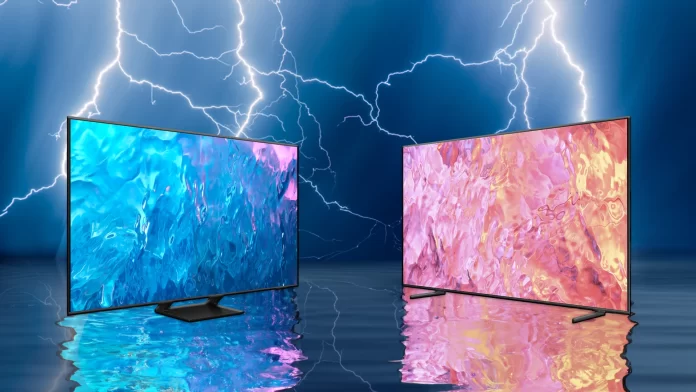When choosing between the Samsung Q60C and Q70C models, you need to consider their key features and differences. The Q70C has a 120Hz screen, making it an excellent choice for gamers who want to connect their new-generation consoles. The Q70C has a higher maximum brightness than the Q60C, making the picture look better in a sunny room. At the same time, the Q60C provides a better black level and is more affordable than the Q70C.
If gaming is your top priority, the Q70C is a better option. However, if you don’t plan on connecting a console, opting for the Q60C will help you save money without sacrificing picture quality. However, if you need more than this description, I have collected more detailed information about these two TVs below to make it easier to compare and choose the right one.
The main thing to say about Q60C and Q70C
These two TVs are pretty similar in many aspects. The Q60C is considered an entry-level TV and the newest QLED series addition. On the other hand, the Q70C is a step above the Q60C and offers a few advantages in terms of features and performance.
The Samsung Q60C is an entry-level TV that offers a good balance between price and performance. It provides impressive picture quality and vibrant colors thanks to its QLED technology. The Q60C also has a decent selection of smart features, allowing you to access various streaming services and apps.
Moving on to the Samsung Q70C, this model takes it up a level. The Q70C has a higher refresh rate, allowing smoother motion during fast-paced scenes. It also offers more advanced gaming features, making it a good choice for gamers. Compared to the Q60C, it offers improved image quality, better contrast, and higher color fidelity. However, there are problems with the black level, as we will see in the example below.
Samsung Q60C and Q70C what is common?
Samsung Q60C and Q70C TVs are from the same line, so they have much in common.
The Samsung Q60C and Q70C share several common features and characteristics, as they both belong to Samsung’s QLED TV lineup. Here are some of the commonalities between the two models:
- QLED Technology: The Q60C and Q70C TVs utilize Samsung’s QLED (Quantum Dot LED) technology, which offers enhanced color reproduction, brightness, and contrast. This technology ensures vibrant and accurate colors, making the viewing experience more immersive.
- Smart Features: Both TVs have smart features, allowing you to access streaming services, apps, and online content directly from the TV. They typically run on Samsung’s Tizen 7 operating system, providing a user-friendly interface and seamless navigation.
- Design: The Q60C and Q70C TVs have a similar sleek and modern design. They are quite slim and have thin bezels that provide a deeper immersion into the viewing area.
- HDR support: Both TVs support High Dynamic Range (HDR) technology, increasing displayed content’s contrast and color accuracy. HDR content provides a wider range of colors and improved detail in dark and bright scenes.
- 4K Ultra HD resolution: Samsung Q60 and Q70 series TVs have a resolution of 4K Ultra HD (3840 x 2160 pixels). This resolution provides a high level of detail and clarity.
Which QLED TV is better: Samsung Q60C or Q70C?
To find out which TV is better, you need to understand the difference between these two models. Although Q60C and Q70C are very similar, they have essential differences. One of the main differences is the screen refresh rate. Samsung Q60C has a refresh rate of 60 Hz, while Q70C has a refresh rate of 120 Hz. This fact may seem insignificant to the average user, but on Q70C, you can fully enjoy the new generation consoles such as Playstation 5 or Xbox X, which support a 120 Hz screen refresh rate.
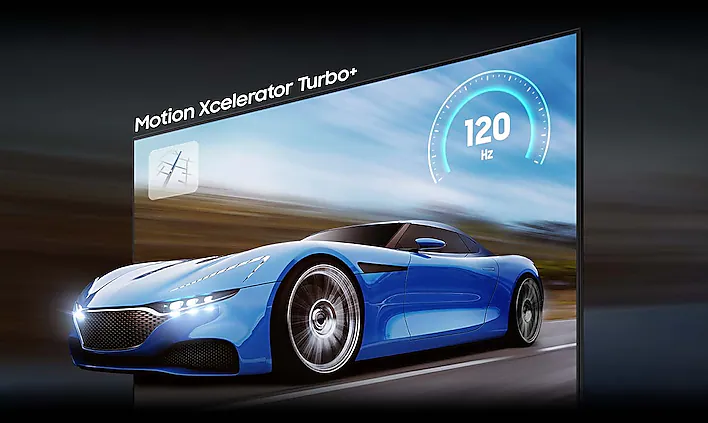
Also, there is a difference in the picture of the two TVs. For example, in this photo, you can see that the Samsung Q70C has more brightness than the Q60C. The two TVs are in standard picture mode.
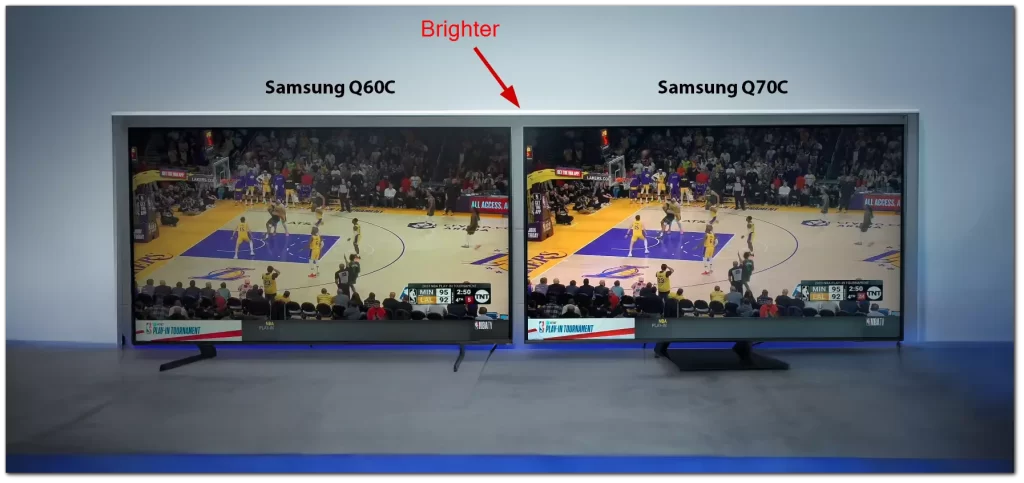
I was surprised that the black level on the Q60C was better than the Q70C, as seen in the picture. I also want to note that in other picture modes, Q60C showed a better result of black color.
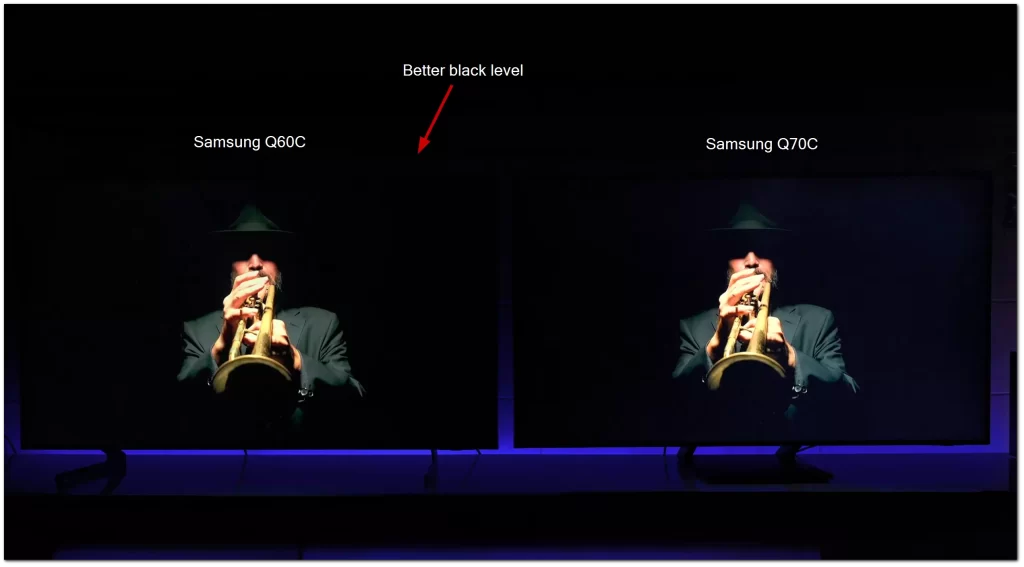
To compare the technical specifications of TVs in more detail you can see in the table below.
| General info | Q60C QLED 4K Smart TV | Q70C QLED 4K Smart TV |
| Year | 2023 | 2023 |
| Design | Flat | Flat |
| Sizes | 32”, 43”, 50”, 55″, 65″, 70”, 75″, 85″ | 55″, 65″, 75″, 85″ |
| Image | ||
| Matrix type | VA | VA |
| Aspect Ratio | 16:9 | 16:9 |
| Resolution | 3,840 x 2,160 | 3,840 x 2,160 |
| Refresh rate | 60 Hz | 120Hz |
| Display Orientation | Landscape | Landscape |
| Brightness | 450 cd/m² | 544 cd/m² |
| Input Lag | 10 ms in 4k (60Hz) | 5.5 ms in 4k (120Hz) |
| HDR standards | HDR10+ Adaptive | HDR10+ Adaptive, HDR10+ Gaming |
| Native contrast | 7000:1 | 7144:1 |
| AI Up-Scaling | Yes | Yes |
| 10-bit support / 1 billion colors | Yes | Yes |
| Contrast | Dual LED | Dual LED |
What is the difference between Q70C vs Q60C audio?
These two TVs have similar impressive sound capabilities but distinct differences that may be important to some users. Let’s delve into the common and unique sound characteristics of smart TVs Samsung Q70C and Q60C and find out what they have in common or different. Let’s start with the common features:
- Sound Output (RMS): Both the Q70C and Q60C TVs deliver a powerful sound experience with a sound output of 20W.
- Speaker Type: Both models feature a 2CH (two-channel) speaker configuration. The dual speakers deliver clear and balanced audio, ensuring dialogue and sound effects are reproduced accurately.
- The Multiroom Link feature lets you connect your QLED TV to compatible Samsung audio devices throughout your home.
- The Q-Symphony feature is available in both the Q70C and Q60C models. Q-Symphony synchronizes the TV’s built-in speakers with compatible Samsung soundbars, resulting in a more immersive audio experience.

- Bluetooth Audio and Bluetooth Headset Support: Both TVs support Bluetooth audio, allowing you to wirelessly connect compatible devices such as headphones or speakers.
- Dolby Decoder: The Q70C and Q60C TVs feature the MS12 2ch Dolby Decoder. This technology enhances the audio quality by decoding Dolby-encoded content, ensuring you experience rich, detailed sound reproduction.
- Object Tracking Sound (OTS) Lite: Both models are equipped with OTS Lite, a technology that analyzes the on-screen action and provides three-dimensional virtual audio. By dynamically adjusting the sound based on the movement and position of objects, OTS Lite creates a realistic audio environment that matches the visuals.
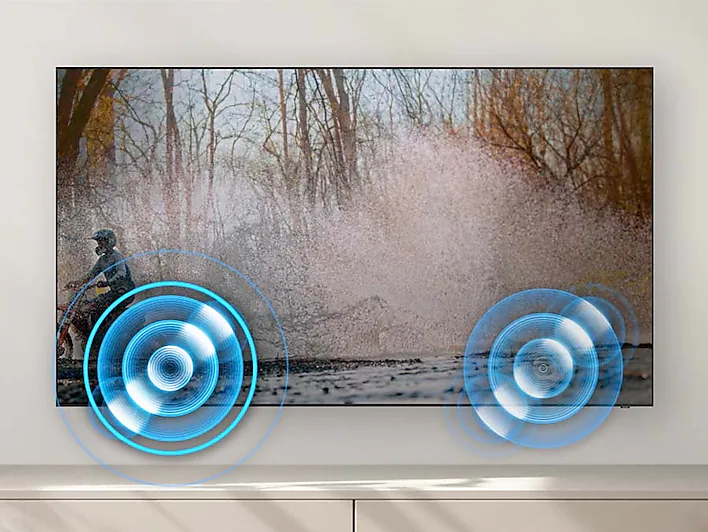
Although there are not many differences in audio functions, they are still there, and here they are:
- Active Voice Amplifier: The Q70C is equipped with an active voice amplifier that automatically adjusts the volume of dialogs to make them clearer and more intelligible, especially in noisy environments. The Q60C does not have this feature.
- Adaptive Sound vs. Adaptive Sound+: Both models offer Adaptive Sound, which adjusts the audio output based on the content being played to provide optimal sound quality. However, the Q70C takes it a step further with Adaptive Sound+. This enhanced version of the feature offers more advanced sound optimization.
Here’s a comparison table for more information:
| Audio Feature | Q60C QLED 4K Smart TV | Q70C QLED 4K Smart TV |
| Dolby | MS12 2ch | MS12 2ch |
| Sound Output (RMS) | 20W | 20W |
| Speaker Type | 2CH | 2CH |
| Multiroom Link | Yes | Yes |
| Sound | OTS Lite | OTS Lite |
| Q-Symphony | Yes | Yes |
| Bluetooth Audio | Yes | Yes |
| Dual Audio support (Bluetooth) | Yes | Yes |
| Dolby Decoder | MS12 2ch | MS12 2ch |
| Object Tracking Sound | OTS Lite | OTS Lite |
| Adaptive Sound | Adaptive Sound | Adaptive Sound+ |
| Active Voice Amplifier | – | Yes |
| Buds Auto switch | Yes | Yes |
As you can see, there is very little difference, and it is obvious that the sound will not be the main factor in choosing between these two TV models.
Smart Service and Smart Features in Samsung Q60C and Q70C
Samsung’s Q60C and Q70C TVs have several nearly identical Smart Services. These features include access to popular streaming apps, voice assistant support, connectivity options, and smart home integration. There are built-in apps such as Netflix and Hulu. There is also compatibility with voice assistants, such as Samsung’s Bixby or Alexa. In addition, smart home integration allows users to control compatible smart devices directly from the TV’s interface, turning it into a central hub for home automation.
The only significant difference in smart services between these TVs is that Samsung Q70C has Far-Field Voice Interaction. Far-Field Voice Interaction is the device’s ability to receive and respond to voice commands from a considerable distance, even in noisy environments. This feature uses complex microphone arrays and signal processing algorithms to improve voice recognition and ensure accurate interpretation of voice commands. More information is below:
| Smart Service | Q60C QLED 4K Smart TV | Q70C QLED 4K Smart TV |
| Operating System | Tizen Smart TV | Tizen Smart TV |
| Bixby | US English, UK English, Indian English, Korean, French, German, Italian, Spanish, BR Portuguese (features vary by language) | US English, UK English, Indian English, Korean, French, German, Italian, Spanish, BR Portuguese (features vary by language) |
| Far-Field Voice Interaction | – | Yes |
| Built-in Voice Assistant | Alexa | Alexa |
| Works With AI Speaker | Alexa, Google Assistant | Alexa, Google Assistant |
| TV Plus | Yes | Yes |
| Web Browser | Yes | Yes |
| SmartThings Hub / Matter Hub / IoT-Sensor Functionality | Yes | Yes |
| Samsung Health | Yes | Yes |
| Universal Guide | Yes (US only) | Yes (US only) |
| Media Home | Yes | Yes |
Smart Features in Samsung Q60C and Q70C
The Samsung Q60C and Q70C TVs have several smart features that make it easy to use the TV. These features include multi-device connectivity, video calling, Tap View for screen mirroring, Multi-View for simultaneous video playback, Music Wall for immersive audio, mobile camera support, easy setup, app casting, and many other clever features.
The only difference in smart features between these two TVs is that Q60C has the standard Ambient Mode, and Q70C has Ambient Mode+. If you want to know more about Ambient Mode, you can read it here.
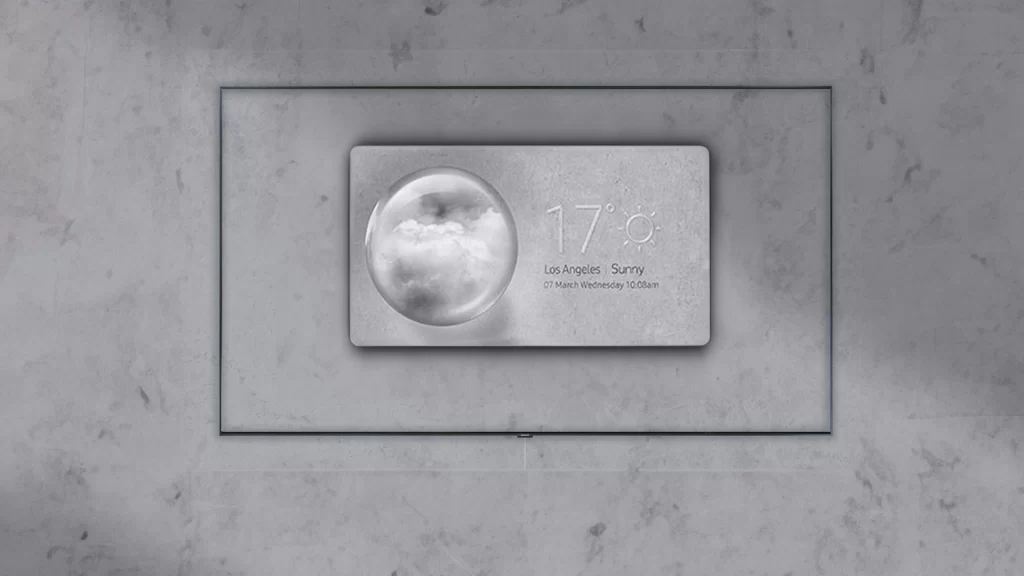
Here is a table comparing the Smart Feature:
| Smart Feature | Q60C QLED 4K Smart TV | Q70C QLED 4K Smart TV |
| Multi-Device Experience | Mobile to TV, TV initiate mirroring, TV Sound to Mobile, Sound Mirroring, Wireless TV On | TV to Mobile, Mobile to TV, TV initiate mirroring, TV Sound to Mobile, Sound Mirroring, Wireless TV On |
| Video Communication | Google Meet | Google Meet |
| Tap View | Yes | Yes |
| Multi-View | Up to 2 videos | Up to 2 videos |
| Music Wall | Yes | Yes |
| Mobile Camera support | Yes | Yes |
| Easy Setup | Yes | Yes |
| App Casting | Yes | Yes |
| Ambient Mode | Ambient Mode | Ambient Mode+ |
| Workspace | Yes | Yes |
| Wireless Dex | Yes | Yes |
| Web Service | Microsoft 365 | Microsoft 365 |
| Chat Together | Yes (US only) | Yes (US only) |
| NFT | Nifty Gateway, La Collection, Art Token, Savage | Nifty Gateway, La Collection, Art Token, Savage |
| ConnecTime | Yes (US only) | Yes (US only) |
| Telemedicine | HealthTap (US Only) | HealthTap (US only) |
As you can see, there are almost no differences.
Game Features in Samsung Q60C and Q70C
Both TVs offer similar game features such as Auto Game Mode, Game Motion Plus, Super Ultra Wide Game View, Game Bar 3.0, Mini Map Zoom, Light-Sync, HGiG support, and Gaming Hub.
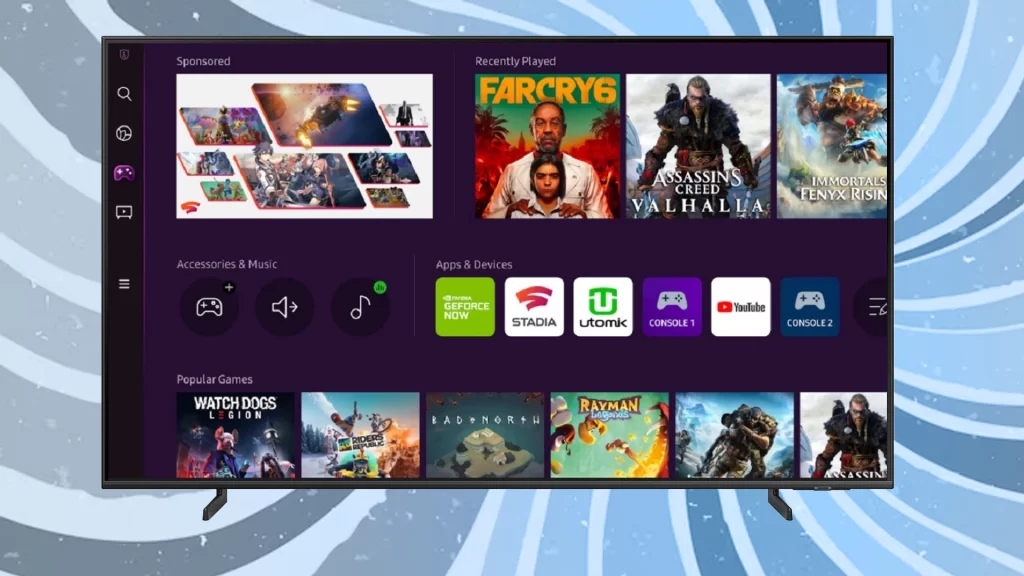
However, the Q70C QLED 4K Smart TV has additional features like Dynamic Black EQ, Surround Sound, and FreeSync Premium Pro support, which can further enhance the gaming experience. Here’s more about the Game’s Features:
| Game Feature | Q60C QLED 4K Smart TV | Q70C QLED 4K Smart TV |
| Auto Game Mode (ALLM) | Yes | Yes |
| Game Motion Plus | Yes | Yes |
| Super Ultra Wide Game View | Yes | Yes |
| Game bar 3.0 | Yes | Yes |
| Mini Map Zoom | Yes | Yes |
| Light-Sync | Yes | Yes |
| HGiG | Yes | Yes |
| Dynamic Black EQ | – | Yes |
| Surround Sound | – | Yes |
| FreeSync | – | FreeSync Premium Pro |
| Gaming Hub | Yes (KR, US, CA, BR, GB, FR, DE, IT, ES) | Yes (KR, US, CA, BR, GB, FR, DE, IT, ES) |
Samsung Q60C and Q70C connectivity
Comparing the two TVs, the Q70C offers some additional connectivity features compared to the Q60C:
- HDMI: The Q70C has an extra HDMI port, and all four HDMI ports support high frame rates (4K at 120Hz).
- Ex-Link (RS-232C): The Q70C has a dedicated Ex-Link (RS-232C) port, whereas the Q60C requires a dongle for this feature.
- Here’s an example of the back panel of the Samsung 2023 85 “Q70C 4K QLED Smart TV. You can see where the different connectors are located. Such as HDMI, USB, and many others.
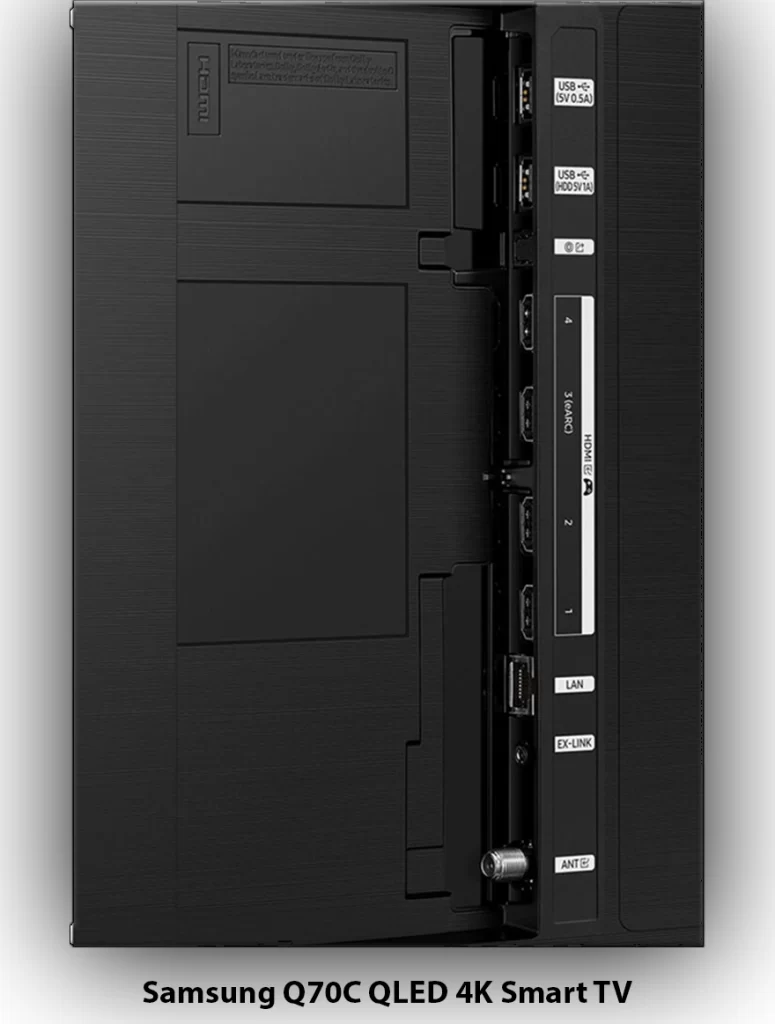
- This picture shows the back of the Samsung 43″ Q60C QLED 4K Smart TV (2023)
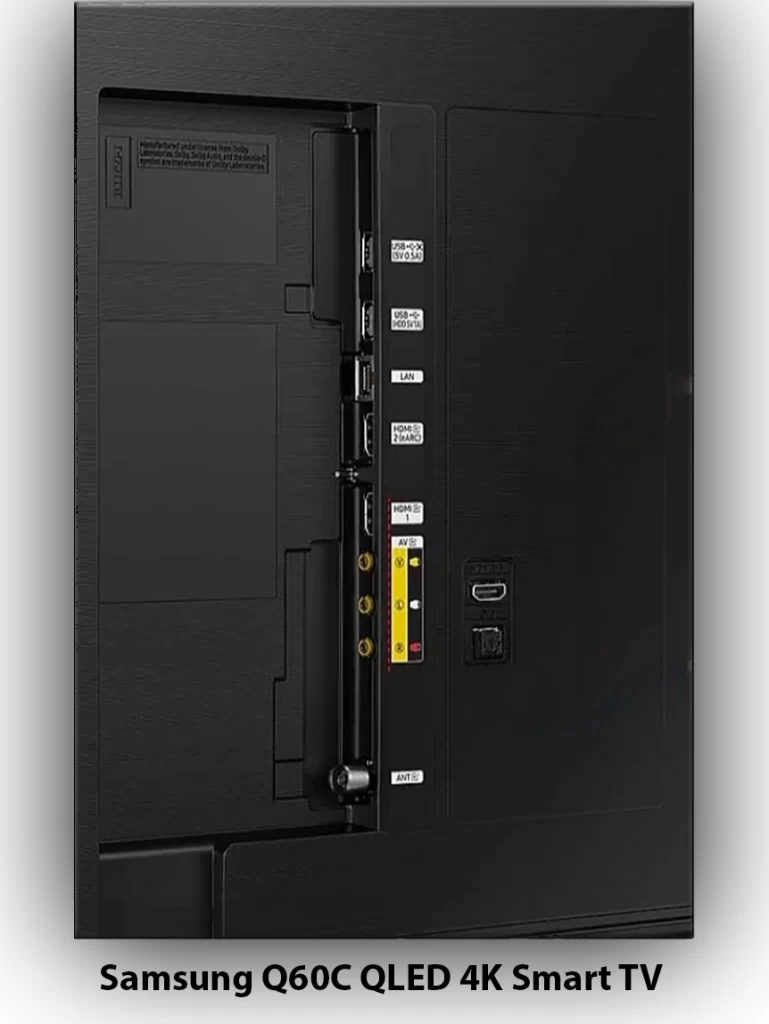
The connectivity panels on the TV will show you the location of the ports. This is especially important if your TV is mounted close to the wall, and you have limited space for an HDMI cable.
You can find more details about the connection options of these two TVs in the table below.
| Connectivity | Q60C QLED 4K Smart TV | Q70C QLED 4K Smart TV |
| HDMI | 3 | 4 |
| HDMI (High Frame Rate) | – | 4K 120Hz (for HDMI 1/2/3/4) |
| HDMI Audio Return Channel | Yes | Yes |
| USB | 2 | 2 |
| Ethernet (LAN) | 1 | 1 |
| Digital Audio Out (Optical) | 1 | 1 |
| RF In (Terrestrial/Cable/Satellite Input) | 1/1(Common Use for Terrestrial)/0 | 1/1(Common Use for Terrestrial)/0 |
| Ex-Link (RS-232C) | w/ Dongle Only | 1 |
| WiFi | Yes (WiFi5) | Yes (WiFi5) |
| Bluetooth | Yes (BT5.2) | Yes (BT5.2) |
| Anynet+ (HDMI-CEC) | Yes | Yes |
Both TVs offer similar connectivity options for USB, Ethernet (LAN), Digital Audio Out (Optical), RF In (Terrestrial/Cable input/Satellite Input), WiFi, and Bluetooth.
Samsung Q60C and Q70C price
The Samsung Q60C series comes in various sizes, each with its price point. The 32-inch model is priced at $499, offering a compact option for smaller spaces. Moving up in size, the 43-inch and 50-inch models are priced at $549 and $649, respectively, providing a balance between screen size and affordability.
The Samsung Q60C series offers 55-inch, 65-inch, 70-inch, 75-inch, and 85-inch models for those looking for larger screens. The 55-inch model is priced at $799, serving as a mid-range option for a more immersive viewing experience. The prices increase as the screen size grows, with the 65-inch model priced at $999, the 70-inch model at $1199, the 75-inch model at $1399, and the 85-inch model at $2299, catering to those who desire a cinematic experience in their living rooms. Here is a table with the Samsung Q60C prices.
| Size | Price (USD) |
| 32″ | $499 |
| 43″ | $549 |
| 50″ | $649 |
| 55″ | $799 |
| 65″ | $999 |
| 70″ | $1,199 |
| 75″ | $1,399 |
| 85″ | $2,299 |
The Samsung Q70C series has some similar sizes to the Q60C series, such as 55,65,75,85 inches, but there are no 43,50,70-inch versions. Here’s the Samsung Q70C price:
| Size | Price (USD) |
| 55″ | $999 |
| 65″ | $1,199 |
| 75″ | $1,699 |
| 85″ | $2,799 |
The Samsung Q70C series has some similar sizes to the Q60C series, such as 55,65,75,85 inches, but there are no 43,50,70-inch versions. The 55-inch model costs $999, which is $200 more than a similar-size Q60C. The 65-inch model is also priced at $1199, which is also $200 more expensive than the Q60c. The 75-inch model costs $1699 for larger sizes, which is already $300 more expensive than its opponent. The top-of-the-line 85-inch model is $2799, which is $500 more than the Q60c.
| Size | Samsung Q60C Price (USD) | Samsung Q70C Price (USD) | Difference (USD) |
| 55″ | $799 | $999 | $200 |
| 65″ | $999 | $1,199 | $200 |
| 75″ | $1,399 | $1,699 | $300 |
| 85″ | $2,299 | $2,799 | $500 |
As you can see, the prices for the matched sizes are higher for the Q70C than the Q60C, indicating that the Q70C generally falls in a higher price range. However, it’s important to note that pricing may vary depending on the retailer and any ongoing promotions or discounts. I recommended checking with authorized sellers or online retailers for the most accurate and up-to-date pricing information.

